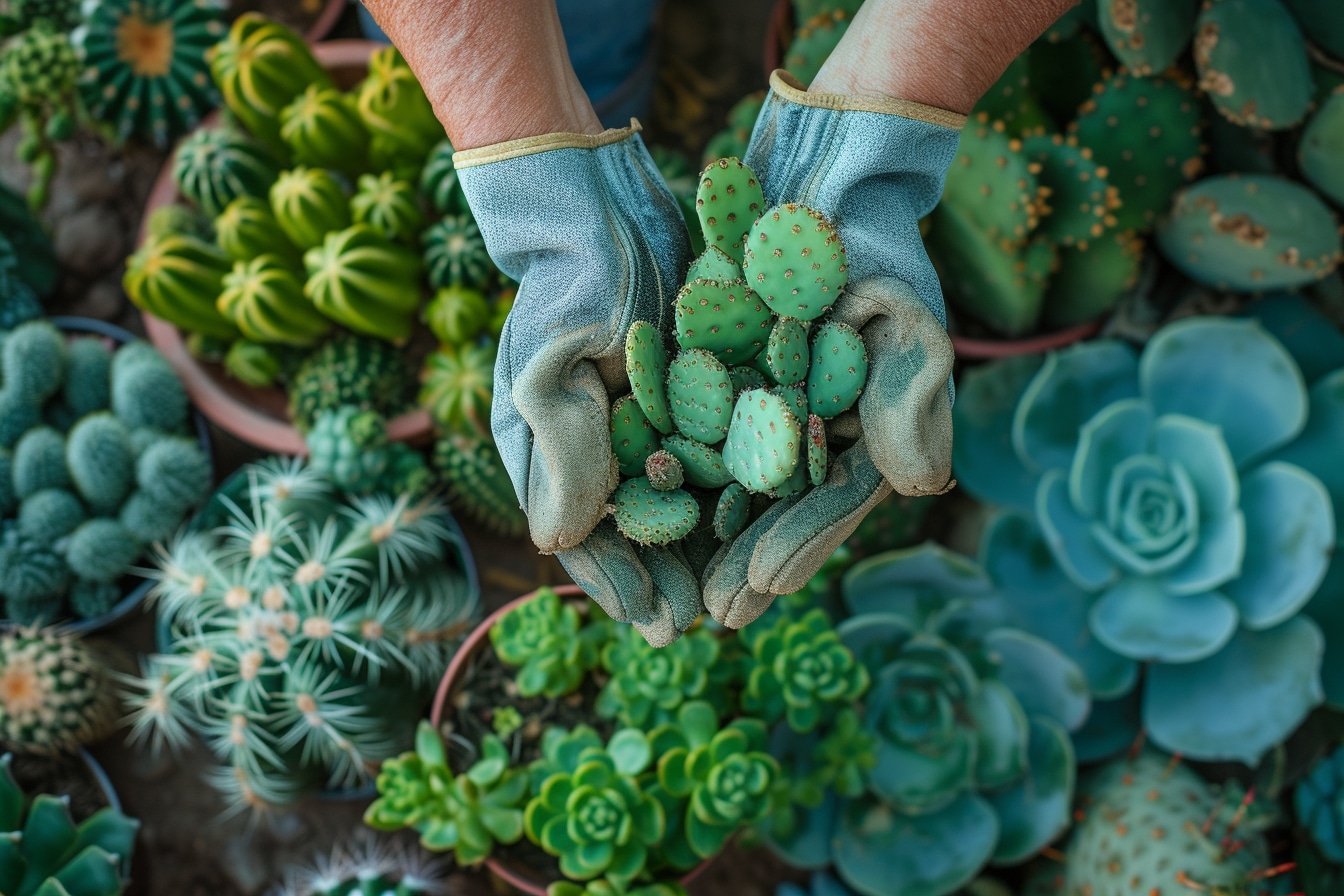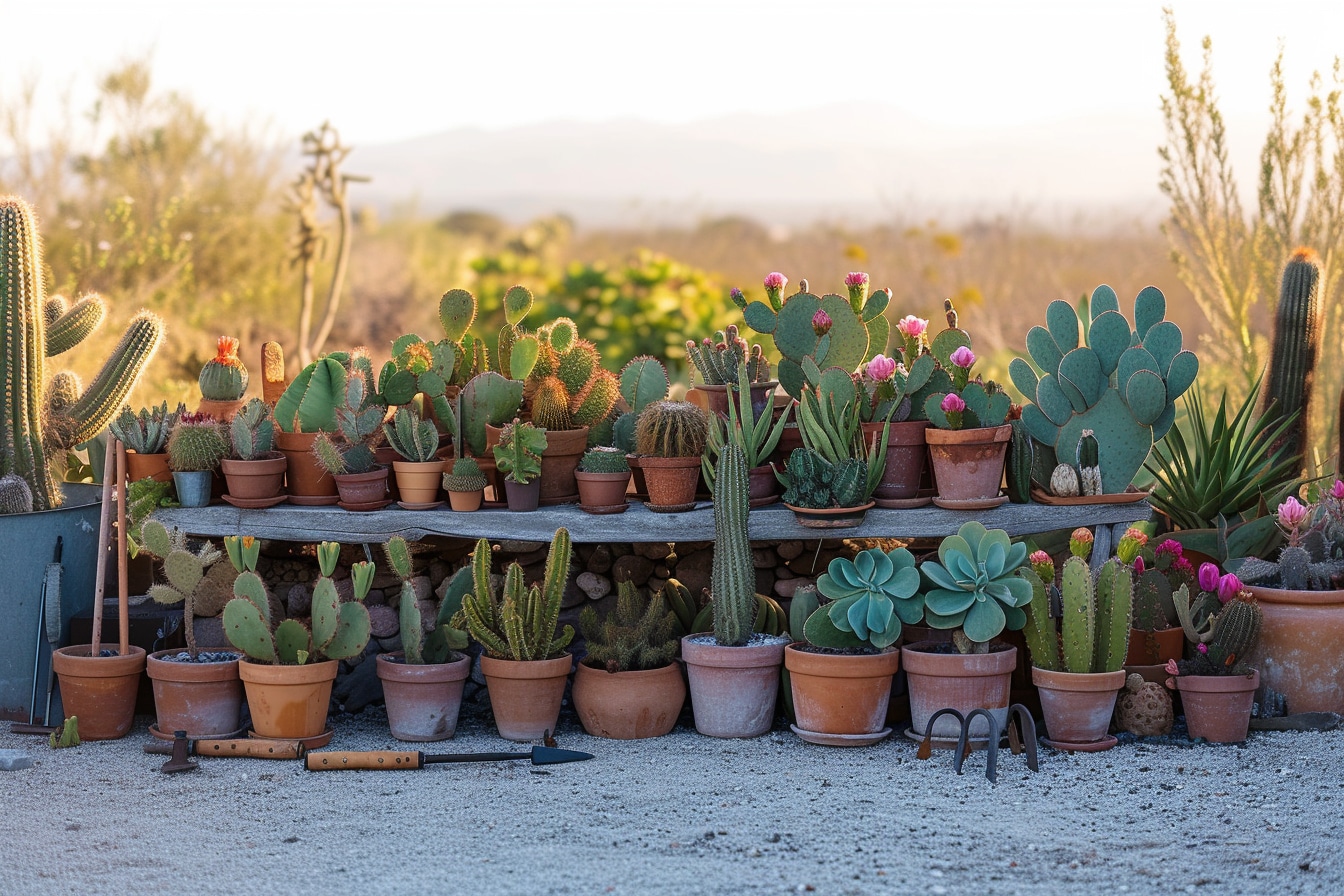Mastering the Art of Cactus Gardening: Essential Tips for a Flourishing Desert Oasis

Growing a cactus garden can be likened to a true art, where every detail counts to ensure vibrant flowering and minimal maintenance. These plants, symbols of resilience and raw beauty, can transform your green space into an exotic oasis, as long as you follow certain essential rules.
Choice of species

Starting by selecting the right specimens is a prerequisite for a harmonious and fulfilling cacti garden. Cacti come in a multitude of shapes and sizes, offering plenty of diversity to suit your aesthetic preferences and the climatic conditions in your area.
Size and Growth: Think about the growth pattern of the cactus. Some can reach dizzying heights while others remain compact. Plan based on available space and desired visual impact.
Rusticity: Be sure to choose species adapted to your climate. Some cacti are resistant to low temperatures and can survive outdoors all year round. Others require protection from frost or must be brought indoors during the colder months.
Bloom: If you are looking for explosions of color, look for species known for their sumptuous flowers. Some only flower at night, others during the day, so pay special attention to the spectacle you want to create.
Location and planting
The place where you decide to establish your cacti garden is decisive for their well-being.
brightness
Cacti love the sun. A sunny and bright location stimulates their growth and promotes abundant flowering. Make sure your garden gets several hours of direct light each day.
Soil type
Well-draining soil is essential to prevent root rot. Opt for a special cactus mix or create your own by combining potting soil, coarse sand and perlite or gravel to increase the porosity of the substrate.
spacing
Respecting sufficient spacing between each cactus when planting prevents competition for nutrients and reduces the risk of disease. This also allows each plant to develop fully without being smothered by its neighbors.
Watering and nutrition
Although known for their drought tolerance, cacti require special attention when it comes to irrigation and feeding.
irrigation
The iconic “less is more” ideally applies here. Too much watering is the number one enemy of cacti. Let the soil dry between two waterings and adjust the frequency according to the ambient temperature and humidity.
fertilizer
Appropriate fertilization with a special cactus product during the growing season offers a welcome nutritional boost. Avoid overdosing, however, as this could harm your protected quills more than benefit it.
Maintenance and care
Regular maintenance and appropriate care guarantee the vigor and aesthetics of your cactus garden.
Pruning and cleaning
Remove dead or diseased parts to preserve the health and beauty of your cacti. Carefully clean up organic residue that could accumulate and encourage the proliferation of pests or diseases.
Weather protection
Taking steps to protect your cacti from extreme weather extends their lifespan and preserves their aesthetics. Shelter or cover them in case of frost and make sure they are not damaged by strong winds.
Pest and disease management
Stay alert for signs of stress or infections. Mealybugs, mites, and fungus are examples of common problems you may encounter. Adequate treatment as soon as the first symptoms appear is essential.
Landscape design

The layout of your garden influences the ambiance and visual impact of the landscape you create. Careful work in design can transform your garden into a living work of art.
Harmony of shapes and colors
Incorporate a variety of shapes and hues to create an intriguing and dynamic scene. Contrast cacti with round shapes with those with slender silhouettes, and harmonize the tones for a coherent aesthetic result.
Integration of rocks and accessories
Complete your plant scene with the addition of rocks, colored gravel or other natural elements to recreate the desert atmosphere emblematic of cacti’s natural habitats.
Focus areas
Design group or solitary focal points to draw the eye and create natural focal points within your garden.
Exploit Verticality: The use of structures such as rockeries or low walls adds an element of verticality to your garden which highlights the most imposing or climbing specimens.
Trails and Routes: Carefully designed paths invite you to walk and explore, in addition to facilitating access for maintenance.
Creating a personal oasis
By taking care of every step, from selection to planting to daily maintenance, you shape an environment that eloquently commends your passion and patience. An optimized cactus garden not only offers a striking aesthetic but also becomes a sanctuary for your well-being and a refuge for biodiversity.
Imagine, then, your own garden as a blank canvas onto which you can project your creativity through these prickly wonders. With a little know-how and a commitment to their development and care, these hardy desert dwellers will reward you with a tranquility and resilience that inspires every day.
Comments
Leave a comment